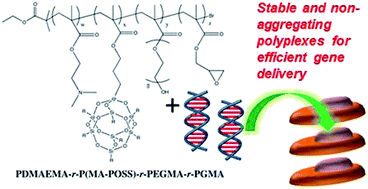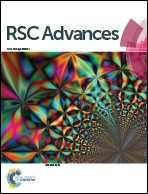POSS-based hybrid cationic copolymers with low aggregation potential for efficient gene delivery†
Abstract
In this study, the synthesis and gene transfection efficiency of a series of novel hybrid amphiphilic copolymers consisting of dimethylaminoethyl methacrylate (DMAEMA), polyhedral oligomeric silsesquioxane (POSS), poly(ethylene glycol) methacrylate (PEGMA), and glycidyl methacrylate (GMA) monomeric segments are reported. The copolymers were synthesized by the atom transfer radical polymerization (ATRP) method. The composition and structural information of the synthesized copolymers were characterized by gel permeation chromatography (GPC) and 1H nuclear magnetic resonance spectroscopy (NMR). The copolymer can successfully condensed the plasmid DNA (pDNA) into nanoparticles. The cytotoxicity studies were performed using MTT assay and the copolymers exhibited relatively low cytotoxicity. The incorporation of PEGMA reduced the aggregation of the polyplexes in serum containing medium. The main objective of this project was achieved as it was demonstrated that polyplexes derived from the synthesized copolymers exhibited superior gene transfection efficiency in human embryonic kidney 293T (HEK 293T) cells than the control homopolymer.


 Please wait while we load your content...
Please wait while we load your content...